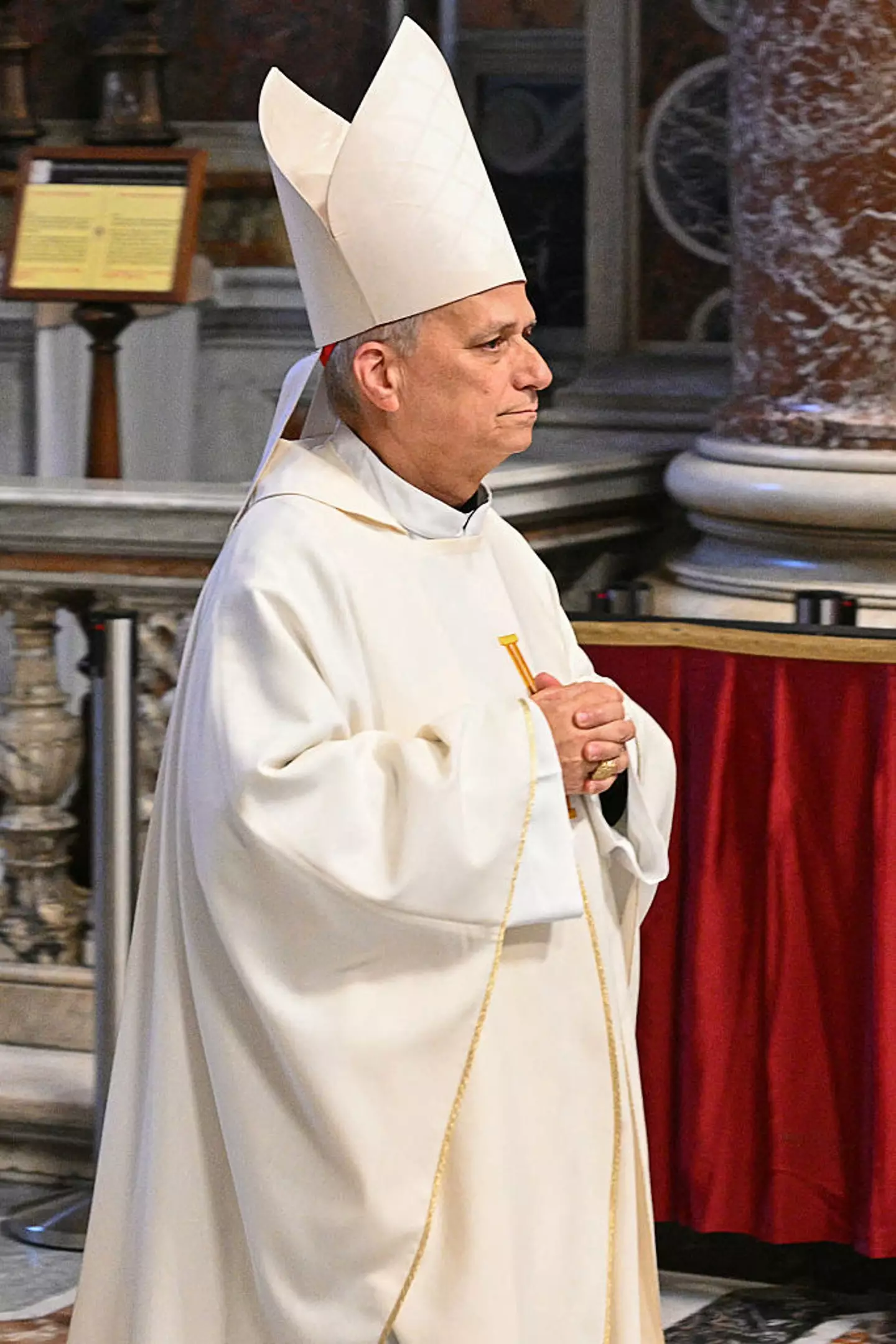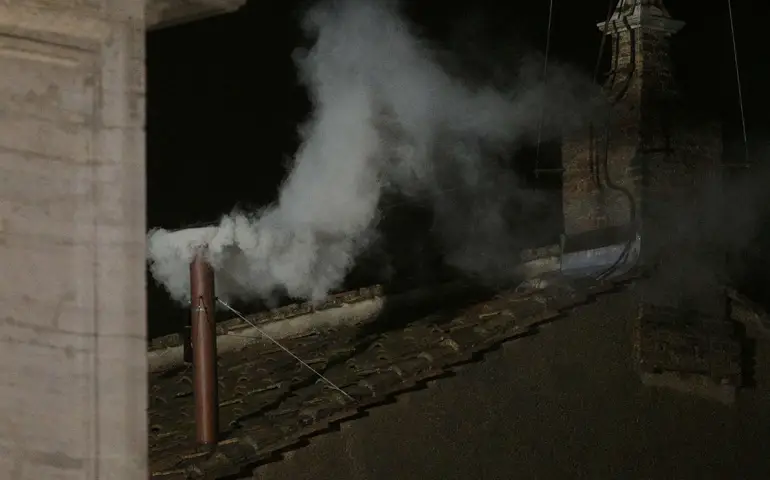The highly anticipated and secretive process of selecting the next pope has come to an end. After two days of intense deliberations behind closed doors, the conclave has officially elected the 267th pope, the successor to Pope Francis. The election, which follows the death of Pope Francis on Easter Monday, April 21, 2025, marks the beginning of a new chapter for the Catholic Church.
Pope Francis’ Passing and the Need for a New Leader
Pope Francis, whose birth name was Jorge Mario Bergoglio, passed away at the age of 88 after suffering a stroke. His death, after 12 years of leading the Catholic Church, left a significant void that needed to be filled. Following his death, the Catholic world entered a period of mourning that lasted for nine days, during which questions arose regarding who would be chosen to take over the papacy. The expectation was that the new pope would continue the legacy of Pope Francis while addressing the challenges facing the Church today.
As per the established protocol, a group of senior cardinals, known as the College of Cardinals, gathered in Rome to begin the process of electing the new pope. These cardinals, appointed by Pope Francis during his reign, were entrusted with the responsibility of choosing the next leader of the Catholic Church.
The Conclave: A Secretive Process
The conclave, a centuries-old tradition, is a highly secretive event where cardinals gather to vote for the next pope. The cardinals who participate in the voting process are required to take an oath of secrecy, ensuring that no information about the proceedings leaks to the outside world. This intense confidentiality ensures the integrity of the process and maintains the sanctity of the election.
The conclave takes place in the Sistine Chapel, where the cardinals are locked inside and prohibited from communicating with the outside world. They are also forbidden from using mobile phones, reading newspapers, or engaging in any form of outside communication. The only time the public receives any indication of the outcome of the votes is when the smoke from the Sistine Chapel’s chimney changes color.
For the past few days, black smoke had been billowing from the chapel’s chimney, signaling that no decision had been reached. However, on May 8, 2025, the world watched with bated breath as white smoke finally emerged from the chimney, signaling that the cardinals had reached a consensus and a new pope had been elected.
The Election of Pope Leo XIV
The election of the new pope was officially announced by the dean of the College of Cardinals from the balcony of St. Peter’s Basilica. The new pontiff, Cardinal Robert Prevost, was chosen after securing a two-thirds majority in the vote. Cardinal Prevost has chosen the papal name Pope Leo XIV, marking a historic moment in the Catholic Church.
Pope Leo XIV, born Robert Francis Prevost in Chicago, Illinois, is the first American pope in history. His election marks a significant milestone in the Church’s history, as he becomes the religious leader of Catholics around the globe. Cardinal Prevost’s background and experience have prepared him for the challenges that lie ahead, both for the Church and for the broader global community.

US cardinal Robert Francis Prevost, now the pope, before the late pontiff’s funeral (ANDREAS SOLARO/AFP via Getty Images)
Cardinal Robert Prevost’s Background
Pope Leo XIV, formerly Cardinal Robert Prevost, has had a distinguished career in the Catholic Church. Prior to his election as pope, he served as the Bishop of Chiclayo in Peru from 2015 to 2023. During his tenure in Peru, he was known for his commitment to pastoral care and social justice, focusing on issues such as poverty, education, and healthcare. His work in Peru earned him respect among the clergy and the laity alike, and he was recognized for his ability to engage with local communities and address their concerns.
In addition to his work as a bishop, Cardinal Prevost served as the General of the Order of Saint Augustine from 2001 to 2013. In this role, he was responsible for overseeing the order’s global operations and ensuring that the Augustinian mission of education, service, and evangelization was carried out effectively.
Cardinal Prevost’s election is seen as a significant shift for the Catholic Church, as he brings a global perspective and a strong background in pastoral leadership. His experience in Latin America, coupled with his work within the Augustinian order, has shaped his approach to the challenges facing the Church today.
The Significance of the Election
Pope Leo XIV’s election comes at a critical time for the Catholic Church. In the wake of Pope Francis’ passing, the Church is facing a number of challenges, including addressing the growing secularism in many parts of the world, dealing with internal divisions, and responding to the needs of an increasingly diverse global Catholic population.
As the 267th pope, Pope Leo XIV will be tasked with guiding the Church through these challenges and continuing the work that Pope Francis began. His election is also significant because of his American background, which brings a fresh perspective to the papacy and may signal a shift in the Church’s approach to issues of global importance.
The election of an American pope is particularly noteworthy given the growing influence of the United States on the world stage. As the first pope from the Americas, Pope Leo XIV’s leadership may help bridge the gap between the global north and south, as well as address issues that affect both regions. His experience in Latin America will also be invaluable in strengthening the Church’s presence in the developing world, where Catholicism continues to grow rapidly.
The Longest Conclave in History
While the election of Pope Leo XIV was completed in just two days, it’s worth noting that papal conclaves have not always been swift. The longest papal conclave in history took place in 1268, when it took two years and eight months to select a pope. In comparison, the recent conclave was remarkably quick, with the cardinals arriving at a decision after just two days of deliberations.
This efficiency is a testament to the cardinals’ focus and determination to choose a new leader for the Church. Despite the secrecy and the weight of the responsibility on their shoulders, the cardinals were able to come to a consensus and elect a new pope in a timely manner.
A New Era for the Catholic Church
The election of Pope Leo XIV marks the beginning of a new era for the Catholic Church. His leadership will undoubtedly shape the direction of the Church for years to come, and his papacy will be closely watched by Catholics and non-Catholics alike. As the new pontiff prepares to take on the responsibilities of his office, there is hope that his leadership will bring a renewed sense of unity and purpose to the Church.
With Pope Leo XIV’s election, the Catholic Church now enters a period of reflection, renewal, and growth. The faithful around the world will look to him for guidance, and his leadership will undoubtedly play a pivotal role in addressing the challenges of the modern world.
Conclusion: A Moment of History
The election of Pope Leo XIV is a moment of history, not just for the Catholic Church, but for the world. As the first American pope in history, his leadership brings a new chapter to the papacy and signals a global shift in the Church’s approach to leadership and service. The conclave, though secretive, has concluded with the selection of a new pope who is prepared to guide the Catholic Church through a time of transition and transformation.
As the faithful around the world welcome Pope Leo XIV, there is hope that his papacy will bring the Church closer together and lead it to a more inclusive, compassionate, and global future. With his experience, wisdom, and dedication to the mission of the Church, Pope Leo XIV is poised to lead the Catholic community into a new era of faith and service.

